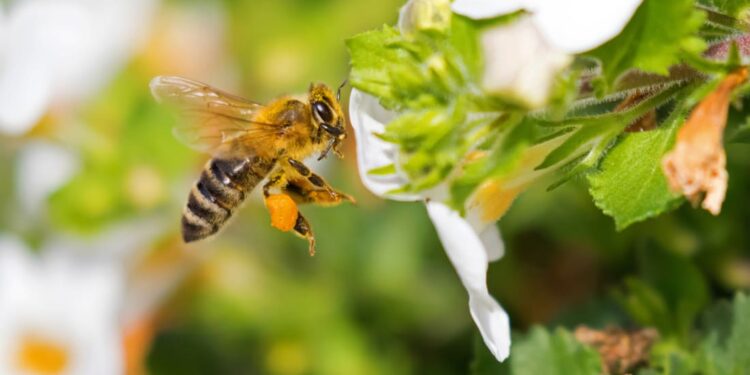It is curious to consider the different attitudes we have towards wasps and bees. These two closely related classes of insect are commonplace, and we endure them in our gardens. When they come into the home, however, we’re not so happy to see them! We have it instilled into us that wasps will sting, but they should only do so if annoyed. Bees, of course, are taught to look after as they are essential to the environment.
If you do come across a swarm of either, then you must not tackle it yourself. Professional services such as Majestic Pest Control will be able to remove the bees or wasps safely. They will protect themselves by stinging if you attempt to move them. The best approach is to do all you can to leave bees and wasps to go about their business without entering your home. Before we talk about some DIY methods of keeping bees and wasps out, let’s check out a few facts about these fascinating creatures.
Some Facts about Bees
You can read all about bees if you click there, and you may be surprised at some of the facts you learn. Here are a few that we found interesting:
75% of crops grown across the world rely on bees and other pollinators to thrive.
- There are more than 20,000 known species of bee across the world and 4,000 in the USA alone.
- Bees have four wings rather than two.
- When the Queen dies, the other bees select larvae to become the new Queen and feed it ‘royal jelly’ to take on the Queen form.
- Bees communicate the presence of food sources by way of the ‘Waggle Dance.’ A British university researched this for more than two years before they worked out the messaging system.
In short, bees are pretty wonderful, but we still don’t want them in the house! Now let’s look at wasps.
Some Facts about Wasps
There are many ways of getting rid of wasps in the home, and we suggest that rather than killing them, you try and catch solitary wasps and put them outside. Here are some facts about wasps:
- Wasps are surprisingly useful as almost every insect that damages crops are food to the many wasp species.
- Unlike the bee, wasps can sting many times.
- Whereas bees are largely peaceful, many wasp species can be aggressive.
- A Queen starts a new colony each spring which can grow to as many as 50,000 insects.
- Wasps are present on every continent except Antarctica.
So, now we know some fun facts about our insect friends, it’s time to look at methods of keeping them out of the home.

Keeping Wasps and Bees Out of Your Home
Before we look at some DIY methods of keeping bees and wasps out of the home, we want to repeat that it is dangerous to tackle a swarm or a nest on your own. Always call in the professionals as the cost will not be great, and they will remove the insects or, if necessary, destroy the wasp’s nest.
There are some deterrents that you can put in place, so let’s have a look at these:
- Always dispose of waste food carefully and ensure you have the lid fully on your bins. Waste left exposed will not only attract wasps, bees and flies but also rats and other rodents.
- There are many essential oils that wasps and bees do not like the smell of. Peppermint is one, and many people recommend a combination of cloves, geranium, and lemongrass mixed with a little water as a spray. Coat the places where you have seen bees or wasps congregate.
- Wasps can be killed quickly by spraying them with soapy water. We advise you don’t use this method on bees which should never be killed.
- Wasp traps can be bought from the store, or you can simply create one with a squash bottle cut in half and some bait put inside.
- Bees do not like the smell of garlic and, oddly, that of cucumber. Place these near to the nest, and they will relocate.
These are the best methods you can use to get bees and wasps out of the house. Now let’s look at some of the measures you should consider to prevent these insects from entering the home in the first place.
Preventative Measures Against Bees and Wasps
Both bees and wasps can get through very small gaps in the mortar, wood, or any other part of the building. The first thing you need to do is look around the exterior of your home and see if you can find a gap that the insects are entering the home via.
If you do, the best course of action is to block it with cement. However, it is often the case that insects are entering the home through a space that cannot be blocked – perhaps an air brick, for example, is essential for ventilation. In this case, we suggest covering the gap with a very fine mesh that can be purchased from a hardware store.
If you have doors that open directly to the outside, hang plastic curtains that can also be purchased from the store. These consist of vertical strips that a person, dog, or cat can easily pass through but an insect cannot. There is little else you can do but follow the advice above, so let’s finish with a quick summary of what we have learned.
Final Words
Bees and wasps are our friends in pollination and eating pests outdoors, but we don’t want them in the house. There are many DIY methods described above, yet we strongly advise that you call in the professionals should you discover either a bee or wasp nest on your property.





